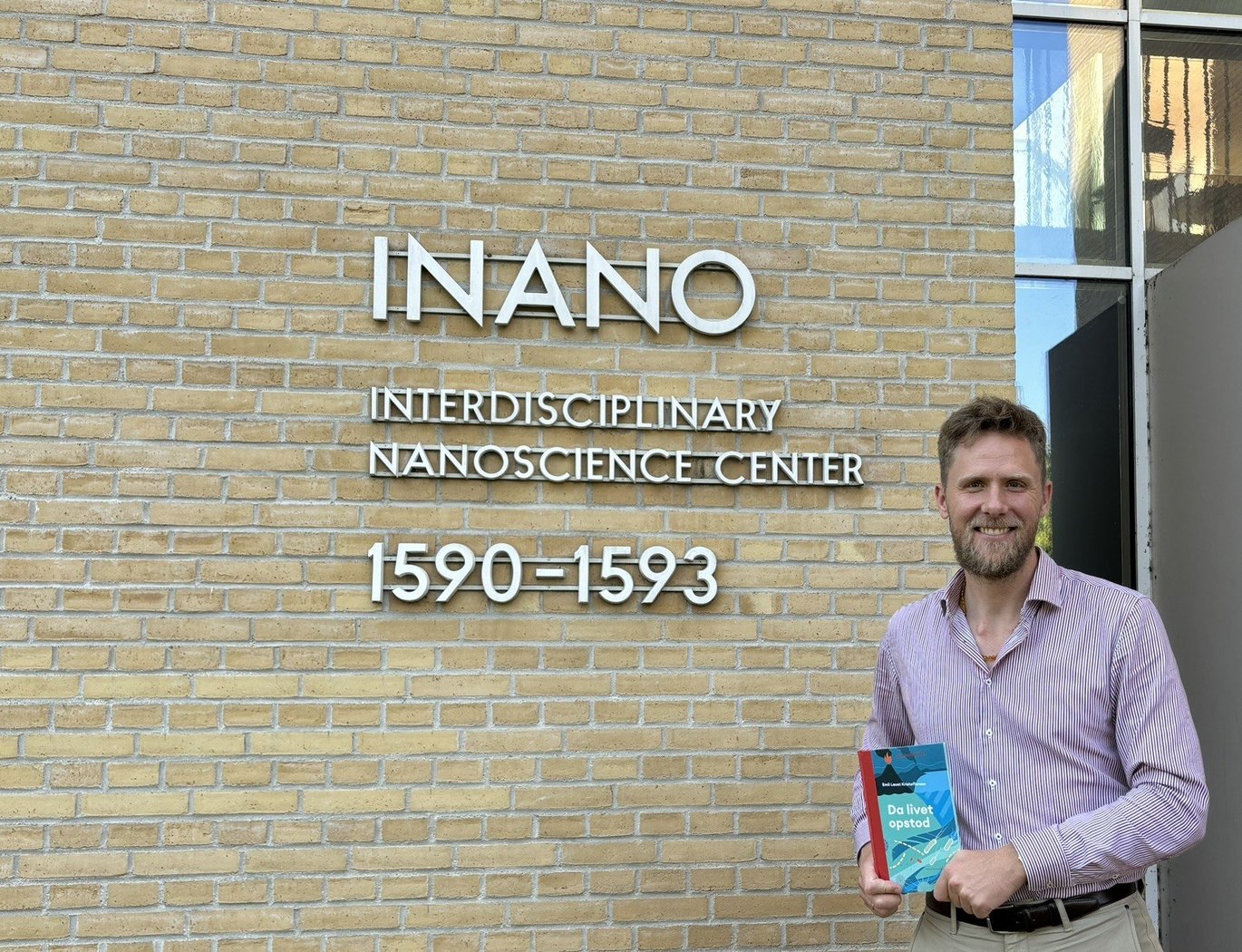Can we reinvent life in the laboratory?
Assistant Professor Emil Laust Kristoffersen from iNANO and Department of Molecular Biology and Genetics has written a popular science book titled "Da livet opstod", released by Aarhus University Press.

On Mars, NASA’s rover Perseverance is driving around in search of signs of life, while scientists hunt for liquid water beneath the surface of the red planet. But do we even know what we are looking for? What does life on other planets look like? Does it even exist, or ever has existed, out there among the stars. We still don’t know how it all began on our own blue planet, as it is difficult to trace an ancestor that disappeared long ago. With an age of 4.6 billion years, Earth’s first fossils are lost to the past.
While some search in space, Emil Laust Kristoffersen looks inward to find the origin of life. Perhaps our own cells and genetic material can bring us closer to understanding whether life arose on the young Earth or arrived on meteorites from space. With both feet firmly planted on Earth, he is attempting to recreate the very first traces of life in a test tube.
“The question of how life originated has puzzled humanity throughout history. Although we still don’t have the answer, science has provided us with some great tools to actually explore this question. I’m fascinated by the discoveries that underpin our modern understanding of life and how it arises, and I think everyone should know about it.” — Emil Laust Kristoffersen
Buy the book here: https://unipress.dk/udgivelser/d/da-livet-opstod/
Contact:
Assistant Professor Emil Laust Kristoffersen
Interdisciplinary Nanoscience Center (iNANO)
Department of Molecular Biology and Genetics
Phone: +45 29 27 13 06
Mail: emillk@inano.au.dk
Publisher:
Aarhus Universitetsforlag
Phone: +45 53 55 05 42
Mail: presse@unipress.au.dk
